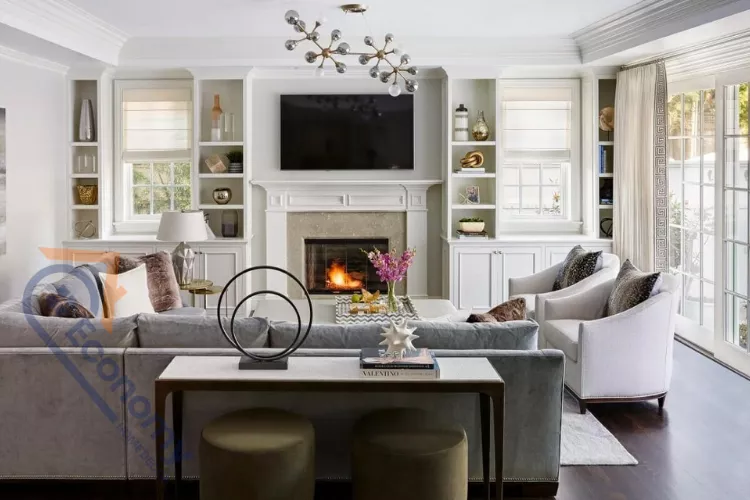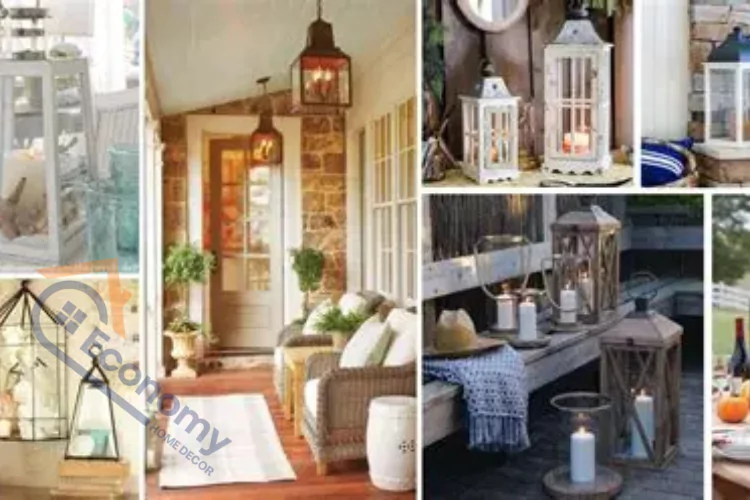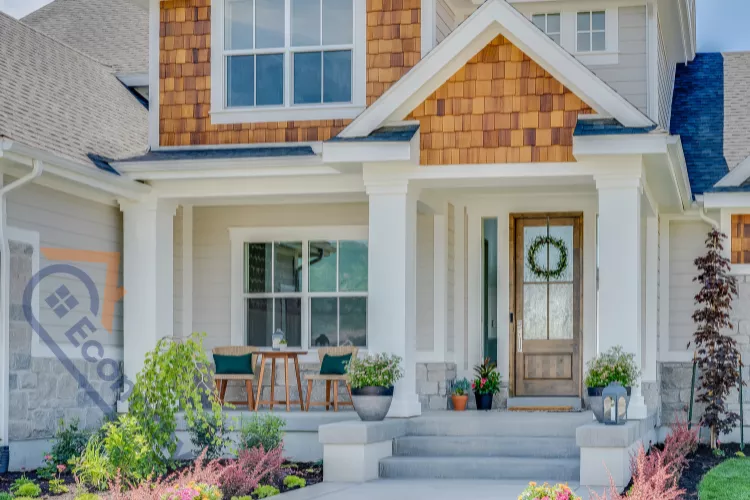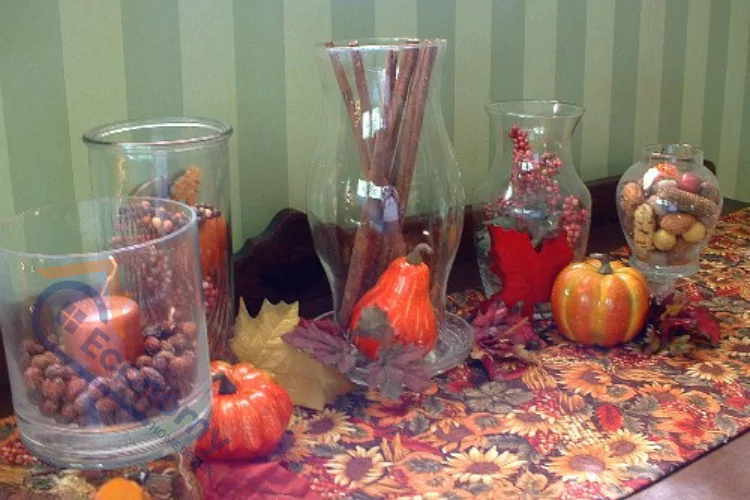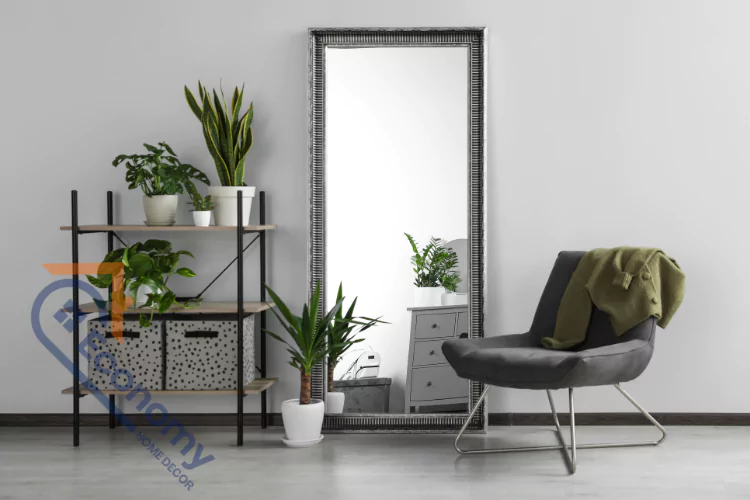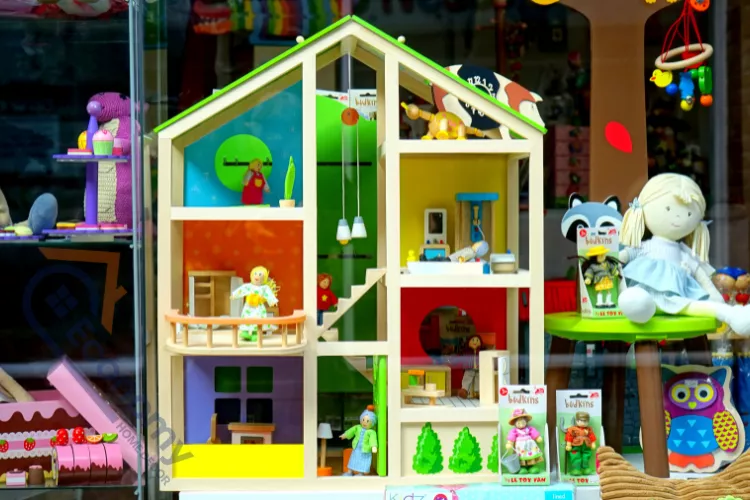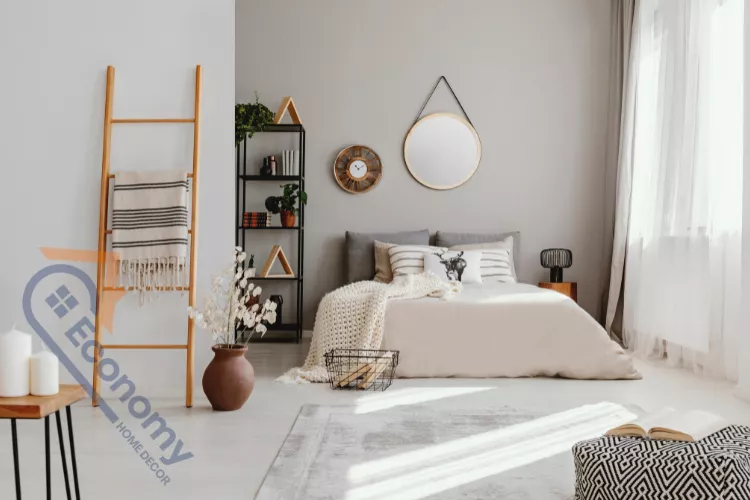When you’re looking to refresh your home’s style, transitional decor ideas offer the perfect balance between classic elegance and modern simplicity. This design approach has become increasingly popular among American homeowners who want a space that feels both timeless and contemporary. Whether you’re redesigning your entire home or just working on one room, transitional style decorating ideas can transform your space into something truly special. In this comprehensive guide, we’ll explore everything you need to know about creating a beautiful transitional home that you’ll absolutely love living in.
What Exactly is Transitional Style?
Transitional decorating ideas have revolutionized the way people think about home design. At its core, transitional style is about creating harmony between traditional and contemporary elements. It’s not too formal, not too casual, and definitely not boring. Think of it as the goldilocks of interior design—it’s just right for most people and lifestyles.
The beauty of transitional decor ideas lies in their versatility. You can incorporate pieces from different eras and styles without creating a chaotic or disjointed look. Traditional furniture with clean lines pairs beautifully with modern artwork. Vintage accessories sit comfortably next to contemporary lighting fixtures. This design philosophy respects the best of both worlds, creating spaces that feel curated but not stuffy, modern but still warm and inviting.
What makes transitional style so appealing is that it prioritizes comfort and livability over strict design rules. Unlike some design styles that can feel intimidating or unfamiliar, transitional home decor ideas welcome you with open arms. It’s perfect for busy families, young professionals, and anyone who wants their home to look fantastic without requiring constant upkeep or being afraid to actually live in the space.
The Foundation: Color Palettes for Transitional Spaces
One of the most important aspects of transitional decorating ideas is understanding the right color schemes. The foundation typically starts with neutral tones that create a calm, welcoming backdrop for your entire home.
The most popular colors for transitional style include warm whites, soft grays, warm beiges, and creamy ivory tones. These colors serve as your canvas, allowing other design elements to shine without overwhelming the space. Many transitional living room decorating ideas leverage these neutrals as the primary wall color, then add warmth through accessories and furniture.
What’s interesting about color in transitional design is that while neutrals dominate, accent colors can absolutely play a role. Soft blues, muted greens, warm taupes, and even gentle blushes work wonderfully. These accent colors appear in pillows, artwork, area rugs, and decorative accessories. The key is to keep them understated and balanced throughout the space.
If you’re working on a specific room, consider beige and grey transitional kitchen decorating ideas or similar neutral combinations. These colors create a sophisticated backdrop that makes both traditional and modern elements feel at home. The psychology behind this approach is simple: neutral colors reduce visual noise, making it easier for your eye to appreciate the carefully chosen pieces you’ve selected.
Transitional Bedroom Decorating Ideas: Creating Your Personal Sanctuary
Your bedroom should be a peaceful retreat, and transitional bedroom decorating ideas excel at creating exactly that. This style brings together comfort and elegance in ways that make your bedroom feel like a luxurious escape from daily stress.
For transitional bedroom decorating ideas, start with a quality bed frame that has clean lines but maybe includes some traditional details like a subtle headboard design. Layer your bedding with a beautiful duvet, decorative pillows in varying sizes, and a cozy throw blanket. The mix of textures—linen, cotton, and maybe a knit throw—adds visual interest while maintaining comfort.
Lighting is crucial in bedrooms, and transitional master bedroom decorating ideas often incorporate both functional and decorative lighting. Consider a combination of table lamps with traditional bases but contemporary shades, paired with a modern chandelier or pendant fixture. This blend ensures your bedroom is both beautiful and practical for everyday living.
Wall art in transitional bedrooms typically includes one or two larger pieces rather than a gallery wall. Black and white photography, abstract art with soft colors, or traditional landscapes all work beautifully. The key is selecting art that speaks to you personally while maintaining the overall aesthetic you’ve created.
Transitional Living Room Decorating Ideas: Where Style Meets Comfort
The living room is often the heart of a home, making transitional living room decor ideas absolutely essential for creating a welcoming gathering space. This is where transitional style truly shines because it creates rooms that look magazine-worthy while remaining comfortable for everyday family time.
Start by selecting a quality sofa in a neutral fabric. Linen, performance fabrics, or high-quality leather all work perfectly. The sofa should have clean lines but perhaps include some traditional detailing through button tufting or rolled arms. Pair this with accent chairs that either match the sofa or complement it with similar colors and textures.
Transitional living room decorating ideas incorporate layers of lighting. Use table lamps, floor lamps, and overhead fixtures to create ambiance and ensure the space is functional during evening hours. Consider adding a ceiling fixture with both traditional and modern elements—perhaps a crystal chandelier with a contemporary silhouette.
Storage is another important element in transitional design. Built-in bookshelves or media consoles with clean lines and simple hardware provide both function and beauty. These pieces help maintain the organized, curated feel that makes transitional spaces so appealing.
Dining Room Excellence: Transitional Dining Room Decorating Ideas
Dining spaces deserve special attention when implementing transitional home decor ideas. The dining room is where families gather and memories are made, so it should reflect both style and warmth.
For transitional dining room decorating ideas, choose a dining table with classic proportions but modern simplicity. Wood tables with straight legs or metal bases work beautifully. Pair this with dining chairs that might feature upholstered seats and wooden frames, blending comfort with visual interest.
Lighting above the dining table is a wonderful opportunity to make a statement. A transitional pendant light fixture or chandelier with clean lines but perhaps subtle traditional details creates the perfect focal point. Many people implementing transitional dining room decor ideas find that a single statement fixture is more impactful than a traditional multi-light chandelier.
Wall decor in dining rooms following transitional style decorating ideas often includes artwork, decorative molding, or a feature wall. Keep the approach simple and intentional. Perhaps frame a collection of botanical prints or hang a single large abstract piece. The goal is enhancement without clutter.
Comparison Table: Transitional vs. Other Design Styles
| Design Element | Transitional | Traditional | Modern/Contemporary |
|---|---|---|---|
| Color Palette | Neutral with soft accents | Rich, warm neutrals | Bold, sometimes monochromatic |
| Furniture Style | Mixed classic and contemporary | Ornate, formal pieces | Sleek, minimalist designs |
| Accessories | Curated selection of pieces | Decorative abundance | Minimal, functional items |
| Textiles | Blend of patterns and textures | Heavy patterns, ornate fabrics | Smooth, simple textures |
| Flooring | Wood, light tile, or quality rugs | Traditional hardwood or ornate tile | Concrete, light wood, or modern tile |
| Lighting | Mix of traditional and modern fixtures | Crystal chandeliers, warm amber | Sleek fixtures, bright white light |
Kitchen Magic: Creating Transitional Kitchen Spaces
Kitchens are expensive to remodel, so choosing a style you’ll love long-term is important. Transitional style kitchen spaces offer the perfect approach because they combine timeless elegance with modern functionality.
When implementing beige and grey transitional kitchen decorating ideas, focus on quality cabinetry with simple, clean lines. Soft gray or warm white cabinets with brushed nickel or oil-rubbed bronze hardware create a perfect transitional base. Add warmth through countertops—white marble, light granite, or warm wood all work beautifully.
Backsplash selection is crucial in transitional kitchens. Classic subway tile in white or cream remains incredibly popular for this style. You might add a border of decorative tile or use larger format tiles for a more contemporary feel. The key is simplicity with subtle visual interest.
For modern transitional easy decor ideas in the kitchen, focus on practical storage solutions that look beautiful. Open shelving mixed with closed cabinets creates visual interest while maintaining function. Display attractive dishware and glassware on open shelves, and store less-attractive items behind cabinet doors.
Bathroom Beauty: Small Transitional Bathroom Decorating Ideas
Bathrooms often get overlooked in design conversations, but they’re wonderful opportunities to express your style. Small transitional bathroom decorating ideas prove that you don’t need a massive space to create something beautiful and functional.
Focus on quality fixtures with clean lines. A simple pedestal sink or floating vanity with brushed metal hardware creates a transitional foundation. For the shower or tub, subway tile remains the gold standard for this style. Keep shower enclosures and bathtub surrounds simple and uncluttered.
Lighting is especially important in bathrooms. A transitional sconce on either side of the mirror provides flattering light for grooming. Consider a simple pendant fixture over a soaking tub if you have one. Recessed lighting can provide task lighting without cluttering the ceiling.
Storage in small bathrooms is essential. Over-toilet shelving, wall-mounted cabinets, and baskets help keep everything organized while maintaining the clean aesthetic that transitional style demands. Select storage pieces with simple designs and natural materials.
Wall Decor and Accessories: Transitional Wall Decor Ideas
Transitional wall decor ideas focus on intentional curation rather than abundance. Every piece should have a purpose and contribute to your overall design aesthetic.
Artwork is typically the star of transitional wall decor. Choose one or two substantial pieces rather than creating a gallery wall. Black and white photography, abstract art in soft colors, or botanical prints all work beautifully. Hang pieces at eye level for maximum impact.
Transitional wall decor ideas also incorporate subtle architectural details. Simple crown molding, wainscoting, or board and batten create visual interest without being overwhelming. These details add traditional character while maintaining the clean, contemporary feel.
Mirrors are another wonderful element of transitional wall decor ideas. A large mirror with a simple frame adds both beauty and functionality, bouncing light around the room and creating a sense of space. Position mirrors to reflect windows or artwork for maximum visual impact.
Creating Family Spaces: Family Room Decorating Ideas Transitional
Family rooms need to balance beauty with practicality, and transitional family room decorating ideas are perfectly suited for this challenge. These spaces should look good enough for guests while remaining comfortable for everyday family activities.
Start with durable, beautiful furniture. Sectionals with washable slipcovers or performance fabrics work wonderfully. Pair these with accent chairs in complementary colors and styles. Include plenty of throw pillows and blankets for comfort and visual texture.
Family room decorating ideas transitional should incorporate entertainment thoughtfully. A media console in clean lines houses your television while maintaining aesthetics. Floating shelves or built-ins provide storage without creating visual clutter. The goal is creating a space where modern technology lives comfortably alongside timeless design.
Storage is crucial in family spaces. Ottomans with hidden storage, built-in shelving, and baskets help maintain organization. By keeping toys, books, and other items neatly stored, you maintain the calm, collected aesthetic that makes transitional style so appealing.
Special Touches: Fresh Transitional Decorating Ideas and Unique Elements
Beyond the basics, fresh transitional decorating ideas incorporate special touches that make your space uniquely yours. These details prevent your home from feeling generic or like a showroom.
Consider incorporating farmhouse elements if you love that aesthetic. Decor ideas for transitional with a touch of farmhouse table work beautifully—think a wooden farmhouse dining table with contemporary dining chairs, or transitional decorating ideas living room with vintage accessories and modern furnishings.
Mantels offer wonderful opportunities for styling. Transitional mantel decorating ideas typically feature a large mirror or artwork as the focal point, flanked by carefully chosen accessories. Keep the approach balanced—perhaps candlesticks, a vase, and a few books arranged symmetrically.
Personal touches make transitional spaces feel like homes rather than hotel rooms. Display family photos in simple frames. Include books you actually read. Incorporate colors or patterns that bring you joy. These personal elements prevent your space from feeling cold or impersonal.
Key Takeaways for Your Transitional Design Journey
- Balance is essential: Transitional style succeeds by blending traditional and contemporary elements thoughtfully rather than randomly mixing styles
- Neutrals create the foundation: Warm whites, soft grays, and beige tones provide the perfect backdrop for transitional spaces
- Quality matters: Invest in well-made furniture and accessories rather than filling your space with trendy but temporary items
- Lighting is crucial: Incorporate both task and decorative lighting from fixtures that blend traditional and modern styles
- Curation over abundance: Select each piece intentionally, ensuring everything contributes to your overall aesthetic
- Functionality equals beauty: Transitional design successfully combines aesthetics with practical livability
Frequently Asked Questions
Is transitional style expensive to implement?
Transitional design can be implemented at any budget level. You can start with key pieces and add accessories over time. The beauty of this style is that quality basics in neutral colors work for years, making it a smart long-term investment.
Can I mix transitional style with farmhouse elements?
Absolutely! Decor ideas for transitional with a touch of farmhouse work beautifully. Mix transitional furnishings with farmhouse accessories like mason jars, vintage signs, or wooden elements for a warm, welcoming blend.
How do I prevent my transitional space from feeling boring?
Include texture through layered textiles, vary your lighting options, incorporate artwork, and add personal touches that reflect your personality. Transitional design is versatile enough to include interesting elements without becoming chaotic.
What’s the difference between transitional and contemporary?
Contemporary style is more minimal and clean-lined, while transitional includes some traditional elements and warmth. Transitional is more forgiving and comfortable for everyday living.
How can I refresh my transitional decor without a complete overhaul?
Swap out pillows, update artwork, change out accessories on shelves, and rearrange furniture. These simple changes can completely refresh your space while maintaining your transitional foundation.
Conclusion: Your Transitional Design Journey Starts Now
Transitional decor ideas represent one of the most practical and beautiful design philosophies available to homeowners today. Whether you’re drawn to transitional living room decorating ideas, transitional dining room decorating ideas, or transitional master bedroom decorating ideas, this style offers the flexibility to create spaces that reflect your personality while maintaining timeless appeal.
The beauty of transitional home decor ideas is that they don’t force you to choose between traditional warmth and modern simplicity. Instead, you get to enjoy both. Your spaces can be elegant without feeling formal, contemporary without feeling cold, and comfortable without sacrificing style.
As you implement your own transitional decorating ideas, remember that the best design is the one you actually love living with. Don’t feel pressured to follow every rule perfectly. Allow your personal style to shine through while maintaining the balanced, curated approach that makes transitional design so special. Start with the foundational elements—neutral colors, quality furniture, and thoughtful lighting—then layer in accessories and personal touches that make your space uniquely yours.
Your home should tell your story and make you happy every time you walk through the door. Transitional style gives you the perfect framework to create exactly that.

